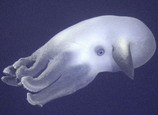
WASHINGTON, June 5 (Xinhua) -- The Sun might be an active and " feisty" star in the early days of its evolution, U.S. researchers reported Wednesday.
The researchers reached this conclusion by studying a young star in the galaxy that is similar to the Sun. The star called TW Hydrae weighs about 80 percent as much as the Sun. It is about 10 million years old and is still accreting gas from a surrounding disk of material in order to grow.
Observations from U.S. Chandra X-ray Observatory and ground- based optical telescopes have allowed the researchers to study TW Hydrae's growth progress, thus providing a window into understanding what the Sun was like about 4.5 billion years ago.
The researchers found that TW Hydrae's growth process was " clumpy and episodic" as the accreting gas did not fall into the star at a steady, even rate. For example, the amount of material landing on the star changed by a factor of five over the course of a few days. That suggested the Sun probably also grew in fits and starts in its infancy.
"By studying TW Hydrae, we can watch what happened to our Sun when it was a toddler," said Nancy Brickhouse of the Harvard- Smithsonian Center for Astrophysics (CfA) in a statement. She presented the findings Wednesday at a meeting of the American Astronomical Society.
















 5,000th baby born in
5,000th baby born in
water in Shanghai


![]()
